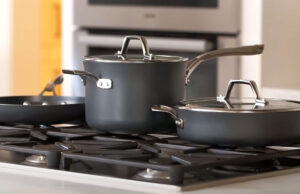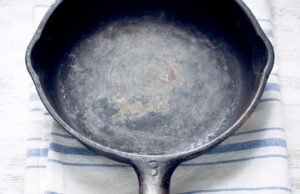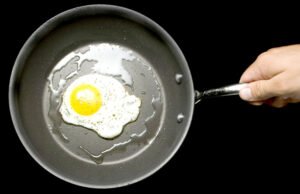As an Amazon Associate, I earn from qualifying purchases at no extra cost to you.
How to Clean Whirlpool Gold Series Dishwasher (Quick Steps)
Have you ever opened your dishwasher and noticed a strange smell or leftover grime? It’s frustrating, isn’t it? Even the most reliable Whirlpool Gold Series dishwasher can get dirty over time. Wondering if there’s a simple way to fix it without calling a technician? In this article, we’ll explore practical tips and tricks for cleaning your dishwasher so it works like new.
First, remove and wash the racks, filters, and spray arms carefully. Second, wipe down the interior with mild soap and a soft cloth. Third, run a cycle with dishwasher cleaner or vinegar to remove buildup. Fourth, maintain regular cleaning every few weeks to prevent odors and clogs. Finally, check for any stuck food or debris in corners and seals.
Emptying and Preparing Your Dishwasher for Cleaning
Before you start, it’s important to empty everything from the dishwasher. Plates, cups, and silverware can block cleaning solutions from reaching all corners. You might notice crumbs hiding in the bottom tray—take a moment to remove them carefully. Even small debris can create odors over time, so don’t skip this part.
Next, remove the racks and utensil holders. They usually slide or lift out easily, giving you access to the interior. If the racks have sticky residues, soak them in warm soapy water for a few minutes. While waiting, you can clean the small crevices inside the dishwasher that are usually ignored.
After removing racks, check the spray arms. Food particles sometimes get stuck in the holes. Use a toothpick or soft brush to clear them gently. This ensures water flows freely during every wash. You’ll notice dishes come out cleaner once this step is done.
Finally, wipe down the door, edges, and gasket. These areas collect grime and soap scum over time. A damp cloth with mild detergent works perfectly. Make sure to reach the rubber seals carefully, as leftover food there can cause smells or leaks.
- Empty all dishes and utensils first
- Remove racks and utensil holders for thorough cleaning
- Clean spray arms to prevent clogs
- Wipe down door edges and gaskets carefully
Cleaning the Filters Thoroughly
The filters in your Whirlpool Gold Series dishwasher trap food and debris. Over time, they can get clogged, reducing efficiency. Start by removing the filter located at the bottom. Twist or pull gently depending on your model.
Once removed, rinse it under warm running water. A soft brush can help remove stuck particles. Avoid using metal brushes as they can damage the mesh. Some filters can soak in warm soapy water to remove stubborn grease.
Next, check the surrounding area where the filter sits. Small crumbs often hide under the rim or in corners. Wipe them with a damp cloth or sponge. Cleaning this area prevents odors and ensures water flows freely during cycles.
Finally, replace the filter carefully. Make sure it’s seated properly to avoid leaks. Many people forget this step, which can reduce dishwasher performance. A clean filter makes dishes spotless and extends the appliance’s life.
- Remove the bottom filter carefully
- Rinse and scrub gently with warm water
- Clean surrounding areas to prevent trapped debris
- Reinstall filter correctly to ensure proper function
Using Vinegar and Baking Soda for Deep Cleaning
Vinegar and baking soda are household favorites for cleaning dishwashers. They remove grime, neutralize odors, and are safe for your appliance. Start by placing a cup of white vinegar in the top rack. Run a hot water cycle without any dishes inside.
The vinegar loosens grease and deposits that build up over time. You might notice some foaming, which is normal. After this cycle, sprinkle a cup of baking soda at the bottom of the dishwasher. Run a short hot cycle to freshen and brighten the interior.
For extra cleaning power, consider combining vinegar and baking soda in problem areas. For instance, sprinkle a little baking soda on a damp cloth and wipe the rubber seals. Then, pour vinegar over it to dissolve grime. It works like magic and smells fresh.
Afterward, check corners and crevices. Some people miss small spaces where buildup occurs. A soft brush or sponge helps reach these hidden spots. Doing this regularly keeps your Whirlpool Gold Series dishwasher efficient and odor-free.
- Place vinegar in the top rack and run hot water cycle
- Sprinkle baking soda at the bottom for freshening
- Use a vinegar-baking soda combo for stubborn grime
- Clean corners and seals for complete freshness
Wiping Down Racks, Spray Arms, and Utensil Holders
Racks and utensil holders often accumulate residue. Remove them and inspect for stuck food. Soak them in warm, soapy water for 10–15 minutes to loosen grime. It makes scrubbing much easier and saves effort.
Spray arms also need attention. Use a small brush to clean the holes carefully. A clogged hole can reduce water flow and leave dishes dirty. Checking every few weeks keeps your dishwasher working like new.
After soaking, scrub racks and holders with a soft sponge. Rinse thoroughly to remove soap residues. It’s surprising how sparkling they look after a simple wash. Small details like this improve overall dishwashing results.
Finally, let everything dry before reinserting. Moisture can trap bacteria if left for too long. Once dry, reassemble the dishwasher and admire the fresh, clean look. Your kitchen will feel cleaner instantly.
- Soak racks and utensil holders in warm, soapy water
- Clean spray arms with a brush to remove clogs
- Scrub and rinse all removable parts
- Dry everything before reinserting for hygiene
Checking and Cleaning the Door and Gasket
The dishwasher door and gasket are often ignored but crucial. Food particles and soap scum collect along the edges. Start by opening the door and inspecting the gasket carefully. You might find crumbs or sticky residue hiding there.
Wipe the gasket with a damp cloth and mild soap. Avoid harsh chemicals that can damage the rubber. Make small circular motions to clean every part. A clean gasket prevents leaks and keeps the dishwasher sealing properly.
Next, check the inside of the door. Sometimes grease and detergent build-up occur near the edges. Use a sponge or soft brush to scrub gently. You’ll notice the door looks brighter and the appliance smells fresher immediately.
Finally, don’t forget the top edge and corners. Many people miss these tiny areas. Using a soft cloth ensures no hidden dirt remains. Cleaning the door and gasket regularly helps your dishwasher perform better and last longer.
- Inspect the gasket for crumbs and residue
- Wipe with a damp cloth and mild soap
- Clean the inside edges and corners carefully
- Regular cleaning prevents leaks and odors
Running a Maintenance Cycle
After cleaning, running a maintenance cycle keeps your dishwasher efficient. Many Whirlpool Gold Series models have a “sanitize” or “heavy” cycle. Use this empty cycle with a dishwasher cleaner or vinegar to flush out remaining residue.
Maintenance cycles remove lingering grease, odors, and mineral deposits. Doing this once a month prevents buildup that can reduce cleaning performance. It’s like giving your dishwasher a mini spa treatment. You’ll see a difference in the shine and smell.
Consider using specialized dishwasher cleaners for stubborn deposits. They often target limescale and hard water buildup. These products work well alongside vinegar and baking soda. A combination ensures deep cleaning and long-term protection.
Finally, check the drain and spray arms after the cycle. Make sure nothing is blocked and everything spins freely. Maintaining these simple habits keeps your Whirlpool Gold Series dishwasher performing at its best every day.
- Run an empty maintenance cycle monthly
- Use vinegar or dishwasher cleaner to remove residue
- Consider specialized cleaners for hard water buildup
- Inspect drain and spray arms for blockages
Final Thoughts
Cleaning your Whirlpool Gold Series dishwasher doesn’t have to be complicated. A few regular habits like removing debris, washing filters, and running maintenance cycles make a huge difference. Using natural cleaners like vinegar and baking soda keeps it fresh and safe. Pay attention to small parts like gaskets and spray arms to avoid hidden problems. With these tips, your dishwasher will stay efficient, smell clean, and keep your dishes sparkling every time.
Quick Guide Table
| Task | How to Do It | Tips |
|---|---|---|
| Empty dishwasher | Remove all dishes and utensils | Check for crumbs hiding at the bottom |
| Remove racks & holders | Slide or lift out carefully | Soak in warm soapy water for easy cleaning |
| Clean filters | Twist/pull out, rinse with water | Use a soft brush for stuck particles |
| Wash spray arms | Remove and rinse holes | Use a toothpick or soft brush if clogged |
| Vinegar cycle | Place a cup in the top rack, run hot cycle | Helps dissolve grease and deposits |
| Baking soda refresh | Sprinkle at bottom, run short cycle | Brightens interior and neutralizes odors |
| Door & gasket | Wipe with damp cloth and soap | Pay attention to corners and seals |
| Maintenance cycle | Run empty cycle monthly | Use dishwasher cleaner or vinegar |
Frequently Asked Questions (FAQs)
Is it safe to use vinegar in my Whirlpool Gold Series dishwasher?
Yes, vinegar is safe and effective for cleaning your dishwasher. It helps remove grease, hard water deposits, and odors naturally. For best results, place a cup of white vinegar in the top rack and run a hot water cycle. Avoid mixing it with bleach as this can produce harmful fumes. Vinegar also works well with baking soda for extra cleaning power. Many people find this method keeps their dishwasher smelling fresh and performing efficiently without harsh chemicals.
Can I remove the spray arms myself?
Absolutely! Most Whirlpool Gold Series spray arms can be removed without tools. Simply twist or pull gently depending on the model. Once removed, you can clean the holes with a toothpick or small brush. This ensures water flows freely during cycles. Regularly checking spray arms prevents poor washing performance. It’s a quick and satisfying task that improves dish cleanliness.
Do I need special detergent to clean the dishwasher itself?
No special detergent is required for basic cleaning. You can use vinegar, baking soda, or mild dish soap. These options are effective and safe for your appliance. However, specialized dishwasher cleaners help remove tough limescale and buildup. Using them occasionally is fine. Regular cleaning with simple household items is usually enough to keep your Whirlpool Gold Series running efficiently.
Is it necessary to clean the gasket every time?
Cleaning the gasket every cycle isn’t necessary, but checking it weekly is helpful. Gaskets trap food and soap residue that can cause odors or leaks. Wiping it with a damp cloth and mild soap keeps it flexible and clean. Many users forget this small detail, but it significantly improves dishwasher longevity.
Can I use bleach in my dishwasher for cleaning?
Bleach should be used cautiously. It can damage the rubber gasket and corrode metal parts. Vinegar, baking soda, or specialized cleaners are safer alternatives. If you choose to use bleach, ensure no other chemicals are present and follow the manual instructions. Using safer options regularly keeps your dishwasher efficient and prevents damage.
Do I need to clean the filters after every wash?
Not after every wash, but filters should be cleaned at least once a month. Removing trapped food and debris prevents clogs and odors. Rinsing under warm water with a soft brush is usually enough. Keeping filters clean ensures your dishwasher runs efficiently and your dishes come out sparkling every time.
Is a vinegar cycle enough for deep cleaning?
A vinegar cycle is excellent for removing grease and mild buildup. For stubborn deposits or hard water stains, pairing vinegar with baking soda or using a dishwasher cleaner works better. Many people find alternating between these methods monthly provides optimal results. It’s simple and safe, keeping the dishwasher fresh and efficient.
Can I clean racks in the dishwasher itself?
It’s better to clean racks outside the dishwasher. Soaking them in warm, soapy water removes stuck food and grease more effectively. Scrubbing gently with a sponge or brush ensures all residue is gone. Reinserting clean, dry racks improves performance and keeps dishes sparkling.




